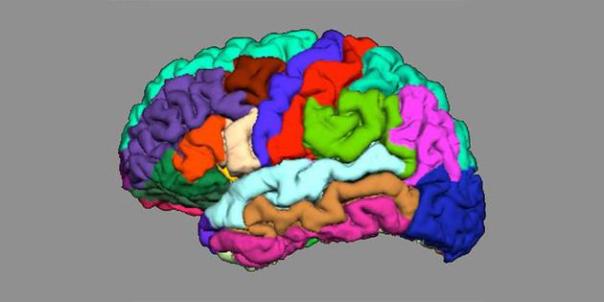Release date: 2018-05-02

Studying and analyzing the different structures of wrinkles in the brain will help predict the risk of schizophrenia in some young adults.
Beijing time on May 2, according to foreign media reports, schizophrenia may form a "special fingerprint" in the brain, even before the symptoms appear completely. Currently, the latest analysis by scientists reveals that this fingerprint, studying the different structures of wrinkles in the brain, will help predict the risk of schizophrenia in some young adults who may have this condition in the future.
The method is based on brain MRI scans to study the interrelationship between the number of wrinkles in different regions of the brain, which can reflect the strength of potential connections between these regions. Using this method, the researchers were able to predict 79 high-risk individuals with an accuracy rate of 80%. The study was published in the April 25 issue of the Journal of Psychiatry of the American Medical Association.
The researchers pointed out that these findings need to be confirmed in more research in the future, and then applied to the clinical stage. Even so, a simple brain scan is not enough to predict the future - it must be used in conjunction with other symptoms for patients seeking help. Lena Palaniyappan, an associate professor of psychiatry at the University of Western Ontario in Canada, said: "The goal of this research is to discover important clues to the structure of the brain, which will help clinicians better diagnose patients and prevent them from eventually suffering. With mental illness, some mental patients are forced to leave school and work. If they can diagnose the timely treatment in advance, it will have a major impact on their life development."
Schizophrenia is a mental disorder characterized by mental disorders involving delusions and distorted perceptions. There are usually some subtle symptoms: teenagers are unsociable and suspicious, have anxiety and depression all day, have sleep problems, and they have some changes in their perceptions and feelings. Doctors believe that these symptoms will make patients in the next two to The probability of suffering from schizophrenia is higher in three years. But these symptoms overlap with many other mental health conditions, so it does not mean that someone will definitely have schizophrenia. In fact, only one-third of people with mental disorders have schizophrenia. Paraniapan said: "It is difficult to determine who has schizophrenia and who does not have schizophrenia."
In contrast to other animals, the surface of the human brain is particularly wrinkled - this may be a "solution" to a small head in a small head. The folds on the surface of the brain, called the cortex, have been identified before human birth and change in the first or second year after birth.
Previous scientists have found differences in the types of brain wrinkles in patients with schizophrenia and autism. For example, when they compared schizophrenia patients with the general population, they found that one brain region had a smoother surface while the other brain region had more wrinkles.
Paraniapan and his colleagues studied the relationship between all brain regions and these types of wrinkles. The idea is that if the two brain regions are highly connected, the degree of wrinkling is very similar. Therefore, if a person has a different type of brain wrinkles than the general population, there is a potential connectivity problem beneath the surface of the brain.
Paraniapan said: "Imagine a strong connection between the two brain regions. If you cut it off, the two regions will not be able to wrinkle properly." The research team collected a group of Switzerland. The tester's MRI scan data, the average age of these testers is 24 years old. Participants included 79 high-risk patients with schizophrenia and 44 health testers.
The researchers then followed these four-year follow-up surveys and found that 16 of the high-risk patient groups had schizophrenia. Looking back at brain scans, the researchers found that 80% of the time in four years, based on the relationship between types of brain wrinkles, can correctly identify who has schizophrenia and who does not have schizophrenia. In those with a disordered brain network, the wrinkle structure in their cerebral cortex is different from the normal population.
More than 30 research reports in the American Journal of Psychiatry in 2005 pointed out that the earlier the patients with schizophrenia receive psychotherapy or medication, the faster their condition improves. Early interventions may even change the course of disease progression. For example, a study published in the journal Nature Neuropsychopharmacology in 2017 found that untreated symptoms for a longer period of time are associated with weak brain connections, especially in areas of the brain associated with psychotropic medications.
Source: Sina Technology
Jiangsu Tiera Biotechnology Co., Ltd , https://www.tierabio.com
